Sound Healing
Sound healing is an old practice that has begun to attract renewed interest in the last number of years.

Sound healing is a very old practice that utilizes sound vibrations to bring back balance and harmony in a body. Spirituality has started to take more notice of it as it recognizes the benefits of this holistic method toward spiritual development or growth.
How does sound healing help a person to spiritually awaken?
Sound healing facilitates spiritual awakening by using specific frequencies to alter consciousness, promoting introspection and self-discovery. The harmonizing effects of sound can open energy pathways and enhance meditation, allowing for a deeper connection to one’s spiritual self and fostering a sense of unity with the universe.
Sound healing works off of the premise that everything in the universe is vibrated at a given frequency, from the minute atoms to the gigantic stars, even your thoughts and feelings. As such, these frequencies have the capacity to move brainwaves from chaos to harmony through the use of sounds like gongs, singing bowls, or tuning forks.
It is in this kind of altered state of consciousness that very deep introspection can occur, thus enabling personal insights and self-discoveries that are important in spiritual wake-up calls. In such sessions, one is likely to feel highly aware and more in touch with his spiritual essence; therefore, he feels a sense of unity with the universe and is provoked toward spiritual growth.
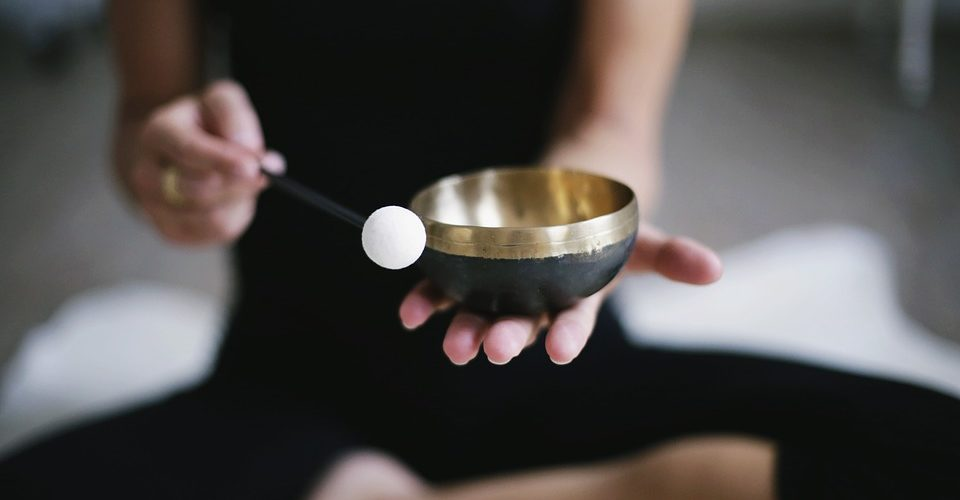
What role do chakras play in sound healing for spiritual growth?
Chakras play a significant role in sound healing for spiritual growth by serving as energy centers that resonate with specific frequencies. Balancing these chakras through sound can align the body and spirit, facilitating energy flow and supporting spiritual enlightenment and healing.
The chakras represent the energy centers along the body that are said to control many different physical, emotional, and spiritual components of our makeup. Each of the chakras corresponds to specific frequencies that can be tuned through sound healing techniques. This includes the Tibetan singing bowls and other resonant instruments that bring into balance and unblock energy centers within the body.
Chakras in perfect harmony guarantee an uninterrupted flow of energy throughout a person’s body, thus contributing to better health, spiritual growth, and enlightenment. This puts one more in touch with the earth, bringing out spiritual and physical connection—thereby enhancing spiritual growth and well-being.
Is it possible that sound healing can really enhance meditation practices?
Yes, sound healing can enhance meditation practices by deepening relaxation and focus. The soothing frequencies help quiet the mind, allowing for a more immersive meditative experience. This synergy fosters heightened awareness and spiritual insight, contributing to a more profound sense of peace and enlightenment.
Among the top reasons that sound healing works as a complement to any meditation practice is that it is based on using frequencies, which the brain quickly picks up to help one get into a meditative state quickly. It is said that instruments, such as the gong, chimes, and crystal bowls, produce vibrations that quiet the nervous system and reduce mental chatter, allowing one to delve into the deepest states of meditation.
With this state of consciousness, people’s ability to be more aware of their spiritual being is increased. This means that the more sound healing allows one to focus and relax, the more one can delve deep into the layers of one’s consciousness for personal insight and spiritual growth. This synergistic effect can provide for a more enriching meditation practice and a deeper sense of spiritual peace.

Which instruments are commonly used in sound healing to bring about spiritual awakening?
Common instruments used in sound healing for spiritual awakening include Tibetan singing bowls, gongs, and crystal bowls. These tools produce harmonic frequencies that resonate with the body’s energy fields, promoting balance and facilitating a deeper connection with the spiritual self.
In sound healing, one can find a great variety of instruments that are used because of the kind of healing frequencies they can produce. Tibetan singing bowls are often used because of their soothing tones, which are capable of aligning chakras and providing deep relaxation. Gongs create a range of frequencies that can help shift consciousness and open people to spiritual insights.
Crystal bowls are made of crystal and produce pure, clear tones that can help, therefore, in resonating the body’s energy fields to enhance meditation. Each instrument has its own properties, which assist spiritual awakening by bringing harmony and balance within the body, mind, and spirit, thus higher spiritual attunement.
How can sound healing support emotional release during spiritual awakening?
Sound healing supports emotional release during spiritual awakening by resonating with emotional blockages and facilitating their release. The vibrations help process unresolved emotions, promoting healing and allowing for personal transformation and spiritual growth. This process contributes to a clearer, more open state of being.
One of the most crucial aspects of the journey of spiritual awakening is the emotional release of personal transformation. Sound healing helps in this process by the use of vibrations that will vibrate with emotional blockages to bring them to the surface for healing.
Instruments such as tuning forks and singing bowls create a safe space for people to explore and process their feelings. The more one begins to realize and let go of such emotional energies, the more relief and clarity he will experience—the two most central elements of spiritual growth. Healing clears a path to transformation, thus empowering another to face a higher spiritual journey with a clearer, more open heart.
Conclusion
Sound healing has great spiritual benefits that enhance deeper connection both within oneself as well as with the outer world or universe at large. It serves therefore as a pathway towards self-discovery where individuals may also discover other holistic health practices through it such as meditation, yoga etcetera so that they can live more fulfilled lives while still growing spiritually at the same time.
References
Sound Healing
Sound healing is an old practice that has begun to attract renewed interest in the last number of years.
Becoming a sound healing practitioner is quite a wonderful journey, bringing together ancient wisdom with modern techniques. Whether you are seeking personal well-being or want to help others self-heal, this blog gives you essential information on what is necessary for you to begin your practice and energize your journey.
What qualifications are needed to become a sound healing practitioner?
The qualifications that are needed to become a sound healing practitioner, formal certification is highly recommended. Various training programs offer certifications in sound healing techniques. Experience in holistic therapies and music knowledge can also enhance your practice.
Though formal certification is not legally essential to becoming a sound healing practitioner, it is always helpful in enhancing your credibility and skill set. Certification programs are usually intensive and comprehensive, covering every detail of the sound frequencies, instruments, and healing techniques. Many training programs allow hands-on practice, so graduates will be ready to conduct a sound healing session.
Some could be helpful if done with some form of holistic therapy, meditation, or even a music background. The programs take any length of time, from weekend workshops to year-long programs. So you can train yourself according to your schedule and, more importantly, your goals.
What instruments are commonly used in sound healing practice?
Common sound healing instruments include Tibetan singing bowls, gongs, tuning forks, and drums. These instruments produce therapeutic vibrations and frequencies that aid in healing. The choice of instruments often depends on the practitioner’s training and the type of healing session.
Different instruments are used during sound healing, each with individual healing values. Known for powerful vibrations in gongs resonating deep inside the body as a balance on the energy, Tibetan singing bowls are famous. Where there is an urge to work on specific areas or spots, precise tuning forks are used, and the beat of drums produces the kind of sound that keeps beating rhythmically so that the sense of grounding and relaxation takes control.
The choice of instruments varies according to the preference of the practitioner and the requirements of the clients too. Familiarizing you with these tools during your training will empower you to create unique sound healing sessions that are tailored to specific healing objectives.
How long does it take to become a certified sound healing practitioner?
Becoming a certified sound healing practitioner typically takes between a few weeks to several months, depending on the program. Short workshops provide basic knowledge, while comprehensive courses offer in-depth training. The duration also depends on your commitment and prior experience in holistic practices.
These are perfect for those who are new in the field and want to familiarize themselves with the practice. Those wishing to understand it better can enroll in certification classes, which can be as long as several months, and concentrate on advanced techniques, client management, and different holistic healing practices. Some even offer flexible timetables, so you can complete your training at your own pace.
What are the steps to start a sound healing practice?
To start a sound healing practice begins with acquiring proper training and certification to build your foundational knowledge. Once certified, you’ll need to invest in the instruments essential for sound healing, such as Tibetan singing bowls, gongs, or tuning forks.
Creating a peaceful environment for your sessions-whethier in a studio or online-is the key to making your clients feel comfortable. Word of mouth, social media, and local wellness events will be just what you need to build up your client base. Networking and ongoing education on new techniques are key to success in this constantly changing field.
What are the costs involved in becoming a sound healing practitioner?
The costs of becoming a sound healing practitioner range from $500 to $3000, depending on certification programs and equipment. Training programs may cost between $200 to $1500, while purchasing instruments like singing bowls or gongs adds additional expenses.
Cost for the instrument may range according to quality and type; an expensive gong is often priced more than singing bowls and tuning forks. Marketing yourself and creating a professional healing space will also add to the cost of your overall practice, but it is something you will need to do if you want the practice to thrive. Therefore, with some careful planning for the budget, you will be fully equipped to start your healing practice.
How do sound healing practitioners attract clients?
Sound healing practitioners attract clients by offering workshops, attending wellness events, and marketing through social media. Creating content that highlights the benefits of sound healing helps build trust. Word-of-mouth referrals also play a significant role in growing a client base.
You can also communicate with local wellness communities or online communities that can help spread the word about your services. Social media sites such as Instagram or Facebook are particularly exceptional delivery methods where people can receive the positive impacts of sound healing through testimonials, videos, and informative content.
A network of wellness professionals who can refer you is also very helpful. Lastly, discount sessions to new clients may be a big motivator to take your practice while possibly referring others.
What career opportunities exist for certified sound healing practitioners?
Certified sound healing practitioners can work in wellness centers, start private practices, or offer virtual sessions. Many also collaborate with yoga instructors, therapists, and holistic health coaches.
Others open private practices or create online sessions, especially since the current wellness map is dominated by online presence. Not even anecdotally, it is rare to see interdisciplinary work with yoga therapists, psychoterapists, or other holistic health coaches that creates space for more comprehensive healing techniques. Practitioners often host retreats, hold workshops, or create digital content and courses, which expand their practice and revenue streams .
In Conclusion
Becoming a sound healing practitioner is a very rewarding path-one that gives you the enriching aspects of both personal and professional opportunity to heal others. When you invest in being certified and instrumentation, as well as relevant marketing, you build thriving practices focused on healing. Arm yourself with knowledge of the steps and the price and reward of this holistic journey toward mastery.
Sound Healing
Sound healing is an old practice that has begun to attract renewed interest in the last number of years.
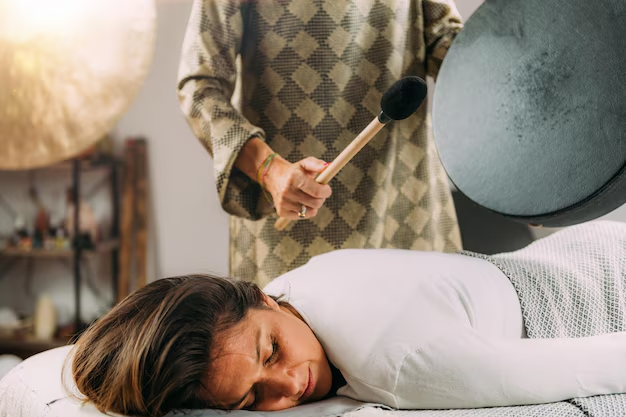
Sound healing presents various mental and emotional benefits. However, the price remains entirely different when location, practitioner experience, or session type is being considered. The blog attempts to discuss the cost side of sound healing so that people may understand what investment they have to make for a holistic practice.
What factors influence the cost of sound healing sessions?
Several factors influence the cost of sound healing sessions, as the sessions vary based on location, practitioner experience, and session type. Urban areas and highly experienced practitioners often charge more. Group sessions are usually more affordable, while private one-on-one sessions tend to be more expensive.
Additionally, the price depends on the experience of the practitioner; people with more advanced training or with a good reputation charge more. Group sessions are comparatively cheaper than private ones since the former gets more attention.
Virtual sound healing can be a middle-of-the-road option about cost and access. Familiarity with those characteristics allows one to select the proper sound healing experience within their budget.
Are group sound healing sessions more affordable than private ones?
Group sound healing sessions are generally more affordable than private sessions. They allow multiple participants to share the cost, making them more budget-friendly. Private sessions, while personalized, usually come at a higher price due to the one-on-one attention provided.
This makes it affordable and accessible to everyone because one can split the session between other people and thus decrease the overall cost of the sessions. However, the private sessions are more expensive due to the personalized attention and focus provided during the sessions by a practitioner.
Although the cost is a bit higher, for those wanting to undertake customized sessions, especially through issues concerning emotional or mental matters, this would be ideal. The decision to undertake either the group or private sessions is thus based on their individual needs and resources.

How much do sound healing practitioners charge per session?
Sound healing practitioners typically charge between $50 to $200 per session, depending on their experience and location. Sessions in major cities or from highly skilled practitioners can cost more. Group sessions tend to be at the lower end of the spectrum.
Practitioners in major cities tend to be priced higher because of the living and competitive cost. Those who have specialized training or even a more well-established practice tend to also be more expensive. The group sessions are far more affordable and are, therefore a greater number of eligible people.
Private one-on-one sound healing can be in the extreme price range. Being aware of the average price range helps one plan their investment into sound healing based on their location and needs.
Is sound healing a cost-effective therapy compared to traditional treatments?
Sound healing can be a cost-effective complementary therapy, especially when used for stress reduction and emotional well-being. However, it may not replace traditional treatments for serious conditions. Many use sound healing as part of a holistic wellness plan, balancing costs across multiple therapies.
It is a very effective method of getting in touch with emotional balance, relieving stress, or gaining clarity of mind for those needing an inexpensive alternative to some of the traditional therapies. It does not really work as a replacement for conventional medical treatments of both physical and mental health, but it manages to present a well-rounded practice when used as part of a holistic wellness plan.
The pricing for sound healing treatments is also set mostly within the economic range of other holistic treatments, such as massage or acupuncture, so it also remains accessible to many. However, people have to consider their needs and make sure to channel their resources on the more beneficial treatments in the long run.
Are online sound healing sessions cheaper than in-person sessions?
Online sound healing sessions are often cheaper than in-person sessions due to reduced overhead costs for practitioners. Virtual sessions offer flexibility and accessibility for clients worldwide, making sound healing more affordable and convenient.
Sounds healing sessions online become more accessible and cheaper to many people as more people start developing this practice online. Without any need for physical space or movement, practitioners may reduce their prices, sometimes making the remote sessions cost-effective over being in the same room as the practitioner.
Further flexibility also means that virtual sound healing accommodates participation from various locations. Accessibility also allows participation of busy schedules and limitations in mobility. Still, some will always find the in-person experience truly immersive and worth the cost.

What are the long-term financial benefits of investing in sound healing?
The long-term financial benefits of sound healing include reduced stress, improved mental well-being, and better health, potentially lowering healthcare costs. Regular sound healing sessions can contribute to overall wellness, reducing the need for expensive treatments or medications in the future.
Investment in sound healing leads to huge long-term finances saved because it promotes well-being together with reducing stress. It will sharpen mental clarity, emotional balance, and physical relaxation altogether to save costly visits to the doctor or expensive treatments in the long run.
When sound healing becomes part of an integrated wellness plan, patients may be able to sleep better, achieve healthier immune cells, and reduce their anxiety, all factors that contribute to reduced physician visits or prescription drugs. All this and other investments in sound healing can help bring about a healthier lifestyle for all of us and thus pay off future healthcare costs from the investments made today.
Can insurance cover sound healing sessions?
Insurance generally does not cover sound healing sessions, as it is considered an alternative therapy. Most sound healing services are paid out-of-pocket, although some practitioners may offer sliding scales or discounts for regular clients.
Most companies don’t provide insurance coverage for sound healing because this is traditionally considered to be an alternative or complementary therapy. This often means that would-be clients of sound healing must pay for treatments out of pocket. However, some practitioners offer sliding scale fees so that sound healing treatments can be rendered accessible to a wider populace of clients.
Some providers may also negotiate with regular clients for package deals or discounts. Whereas it may cost an arm and a leg, a user of sound healing often feels that their emotional and mental benefit is more than worth the price.
In Conclusion:
Understanding the financial investment in sound healing is important to someone looking to add it to their individual wellness routine. Since one would have options involving group sessions and online alternatives, sound healing can be a very affordable addition to holistic health practices. Planning ahead enables people to make well-considered decisions that are going to align with their financial and wellness goals.
Sound Healing
Sound healing is an old practice that has begun to attract renewed interest in the last number of years.

Sound healing has gained popularity due to its benefits but has its criticisms and controversy. Some debate scientists are questioning its scientific validity, while others praise it as having a positive impact on health. This blog will take you through the challenges sound healing is facing, discussing criticisms, and eventually going through insights into its effectiveness.
What are the scientific criticisms of sound healing?
Scientific criticisms of sound healing focus on the lack of rigorous evidence supporting its effectiveness. Critics argue that sound healing relies on anecdotal reports rather than scientific studies. The absence of standardized protocols also raises questions about their reliability in clinical settings.
Critics even point to the fact that there is hardly any scientific evidence that supports sound healing, and most of them are, in fact, uncontrolled studies. Most argue that most studies in this field are based on personal testimonial accounts, which, in scientific language, are considered untrusted.
The lack of uniform approaches and standardized procedures cannot help but further reduce the validity of the practice, for results vastly differ from one practitioner to another. Such concerns notwithstanding, advocates point out that the benefits of sound healing may well be due to placebo effects or relaxation responses, which need not be scientifically undergirded to produce benefits for individuals.
Is sound healing just a placebo effect?
Sound healing is often labeled a placebo effect because its outcomes are difficult to measure scientifically. Critics believe the healing comes from a belief in the therapy, rather than the sound itself. Supporters argue that even if it is placebo-based, the results still benefit individuals.
The place in the criticism of sound healing involves a significant role. Many skeptics say that the apparent value lies in the belief of the participant in the therapy rather than in the sound frequencies themselves.
Proponents argue that even though sound healing does indeed work through the placebo effect, the positive results, such as decreased stress or improved mood, are valuable to those experiencing them. Whether it can be scientifically measured or not, the mental and emotional advantages of the practice provide significant change for many.

Why do some medical professionals reject sound healing?
Medical professionals reject sound healing due to its lack of evidence-based support and inconsistent results. Many consider it pseudoscience, as it doesn’t align with conventional medical practices. The absence of clinical trials further limits its acceptance within the medical community.
Controlled clinical trials and measurable results are not available, and hence it is difficult for doctors to recommend this as a treatment option. One may try explaining the reasons why people who practice it tend to vary their methods which might lead to inconsistent or unverifiable results.
The medical fraternity considers it to be a pseudoscience and feels that patients must be treated with definitive medical interventions rather than alternative approaches whose outcomes cannot be corroborated. However, holistic practitioners may add sound healing as an adjunct therapy due to its stress-reducing effects.
Can sound healing replace traditional medical treatments?
Sound healing will not replace traditional medical treatments, as it lacks the scientific backing necessary for serious health conditions. While beneficial for stress relief and emotional balance, sound healing is best used as a complementary therapy alongside conventional medicine.
Although sound healing has proven very effective for emotional and mental improvement, it is not considered a medical treatment for severe or chronic illness. Its role in healthcare can better be described as an adjunct therapy that promotes relaxation and emotional balance.
Experts advise against the use of sound healing as the sole treatment, as delay in needed medical treatments may lead to worse health conditions. Including sound healing with traditional healing techniques may provide it to be a holistic approach, but it should always be talked with a health provider for the best results.
What are the most common misconceptions about sound healing?
The common misconceptions about sound healing include the belief that it cures diseases or replaces medicine. Many people also assume it works for everyone, while its effects vary greatly. The lack of regulation leads to inconsistent experiences across different practitioners.
Actually, sound healing is not there to cure diseases but to make people healthy mentally and emotionally. Another misconception in this regard is that everyone would have the same effects.
However, the experiences differ from person to person based on emotional conditions, amongst others, and also on the skill level of the practitioner. This lack of regulation of sound healing further fosters misperceptions, for different practitioners use different methods, and it ends up producing diverse results and outcomes.

Why do some people find sound healing controversial?
Sound healing is controversial due to its lack of scientific validation and inconsistent results. Critics argue that it relies on placebo effects rather than proven therapeutic benefits. Additionally, the commercialization of alternative therapies raises ethical concerns about misleading claims.
Critics believe that the person’s benefits are owing to the effects of the placebo or sheer belief and not actually therapeutic power. Furthermore, the commodification of sound healing as a panacea raises ethical questions since some practitioners might exaggerate promises about the efficacy of its practice.
This then makes the issue of credibility questionable since those seeking health healing would be misled and make uninformed decisions, in reliance with such unproven promises. Standardization and formal regulations can be held at the center of this debate.
How do practitioners defend sound healing from criticism?
Practitioners defend sound healing by pointing to its ancient roots, positive anecdotal results, and the benefits of relaxation and stress relief. They argue that even if scientific proof is limited, the practice still helps individuals achieve emotional and mental balance.
But while modern science is unable to confirm its degree of effectiveness, there are a number of hundreds of thousands of positive experiences reported by individuals who claim to have used it; as such, some believe that it is for this reason that they need not provide scientific proof for their continued practice: it has alleviated their emotional stress and reduced their stress levels. The second reason is emphasized among practitioners themselves. They propose that sound healing cannot be delineated to any conceptual form established in a clinical setting.
In Conclusion
Although sound healing brought lots of attacks because of the lack of scientific proof, it remains practiced widely because of its advantages for emotional and mental well-being. It continues to gain places in the lives of those people who seek alternative ways of achieving personal growth and balance in life in whatever capacity as a complement or a relaxation technique.
Sound Healing
Sound healing is an old practice that has begun to attract renewed interest in the last number of years.

Healing happens with special vibrations by the application of sound healing. It is the practice of bygone days that always appears to be supportive of balancing energy, so it facilitates growth in a person and maintains healing. It reduces the stress of the body, boosts the sense of mindfulness, and increases the perception of one’s self. This blog discusses how sound healing transforms your life and how you can find some very valuable insights if you are interested in personal development.
How does sound healing enhance personal growth?
Sound healing enhances personal growth by promoting mindfulness, reducing stress, and boosting emotional clarity. It helps individuals connect with their inner-selves, facilitating emotional release and personal transformation.
These soothing vibrations coming from sound healing align mental, physical, and emotional well-being with true self-awareness. However, when stress is low, the mind is open to self-awareness and transformation. Since this holistic practice unifies emotional, mental, and physical well-being, one becomes in tune with him or herself.
As this emotional barrier is let go, it will become easier to cultivate mindfulness and positive personal change. Eventually, constant periods of sound healing strengthen long-term personal development as one builds up self-confidence and resilience of emotions.
How does sound healing reduce stress for personal transformation?
Sound healing reduces stress by calming the nervous system and promoting relaxation. As stress diminishes, emotional resilience improves, allowing for better personal growth. Regular sound healing sessions support emotional balance and help individuals manage life’s challenges more effectively.
The integration of sound healing allows relaxation to settle into the body while relaxing the mind by invoking the parasympathetic nervous system. Thereby, with the immense reduction of cortisol levels, human beings experience less stress and anxiety.
Once this stress is out of the way, people experience emotional growth with better control of thoughts and reactions. It brings into view a change in perspective that uses the strength and clarity needed for personal transformation.

Can sound healing improve emotional well-being?
Sound healing improves emotional well-being by balancing energy, reducing emotional blockages, and enhancing emotional clarity. It creates an environment for healing unresolved emotions, fostering peace and emotional resilience.
When one is undergoing sound healing, there is reduced emotional tension, and greater balance within the individual is felt. That is where vibrations are present and will bring about elimination of energetic imbalances that generally cause too much distress through emotions. Through this, the person can have a way to let go of unexpression emotions and find peace.
When there is clarification concerning one’s emotions, it provides persons with the thrust to rebound with a stronger will in controlling emotions. With an effective soothing tone, emotional blockages begin healing, giving people deep emotional healing. Over time, this healing delivers long-lasting gains emotionally and more sound mental health.
How does sound healing improve self-awareness?
Sound healing improves self-awareness by encouraging mindfulness and deepening one’s connection to their inner thoughts. The practice helps individuals focus on the present moment, fostering a heightened sense of awareness about their emotions, thoughts, and actions.
Through the rhythmic vibrations of sound, man can calm his mind and attune himself to his inner world. This meditative state assists self-reflection to go deeper, enabling them to know their thought pattern, emotions, and behavior. When one’s consciousness is at its peak, one will be more aware of their actions and what causes their emotional responses, thus leading to personal growth through life’s experiences.
In this way, by being connected with the self, healing through sound enables a person to be conscious of his decision-making and become empowered in everything that he is doing.
What role does sound healing play in spiritual growth?
Sound healing promotes spiritual growth by aligning the mind, body, and soul. The practice deepens the connection to higher consciousness and opens up channels for spiritual awakening, enabling personal transformation on a deeper level.
Sound healing clears the roads for achieving spiritual awakening because it attunes the body’s energetic frequencies with the higher vibrations. This alignment thus provides a space for deeper exploration of the spiritual, through which one can tap into their intuition to connect with their inner wisdom.
Besides, it helps dissolve the blockages of energies that hinder spiritual growth and leads toward enlightenment in a relatively easier way. In the long run, sound healing fosters an ultimate connection with the spiritual world, and this leads to a deep sense of personal transformation and inner peace.

How can sound healing benefit mental clarity?
Sound healing benefits mental clarity by clearing energetic blockages and calming the mind. This allows for improved focus, better decision-making, and enhanced creativity, ultimately leading to personal growth.
The specific sound frequency applied in the process of sound healing removes the type of mental muck that is produced by stress and intervenes with emotions. The pacifying sound creates a deep relaxation within the brain, which means clear thinking and concentration.
Such a relaxed mind leads to clearer thinking, improved problem-solving capabilities, and a creative head. If followed regularly, the individual mental functioning can be improved significantly leading to sustained mental lucidity and growth over time.
How does sound healing support physical well-being?
Sound healing supports physical well-being by reducing tension, promoting relaxation, and balancing the body’s energy flow. It can aid in pain relief, improve sleep quality, and support overall health, contributing to holistic growth.
The basis of physical benefit in sound healing is through relaxation and reduction of bodily tension because of the liberty to be deeply relaxed. Its pacifying frequencies stimulate the parasympathetic nervous system, which reduces tension created by stress on the body to enable your muscles to release all the bound-up tension, leading to high-quality sleep, and strengthening the immune system, and overall health.
Sound healing balances the energy flow in the body, speeding up the physical healing process whereby chronic pain and discomfort will disappear. These changes facilitate both physical and holistic personal development.
In Conclusion
It affords a holistic model of personal development that works with the emotional and mental levels of the individual but also with the spiritual and physical. Relaxation and clarity are the best complement to balancing the body for deep, long-lasting transformation. Sound healing can open the doors to deep inner healing and sustainable growth in your personal development journey.
Sound Healing
Sound healing is an old practice that has begun to attract renewed interest in the last number of years.

Sound healing has managed to get the attention of many people searching for integrative solutions for health and healing for both the body and the mind. Sound healing is a powerful method of alternative healing, which serves to replenish energies, balance emotions, and promote ultimate peacefulness in a more relaxed manner. But how does one start as a novice? In this blog, we shall discuss the important factors as well as ways in which one can make a beginning in the realm of sound healing.
What are the benefits of sound healing for holistic health care?
Sound healing provides multiple holistic therapy benefits, including stress reduction, improved sleep, and emotional balance.
Therapeutic sounds work by applying certain frequencies that act on the energy systems of the body and reestablish the equilibrium. This procedure is a common feature in non-conventional medicine because it fosters a state of profound peace, which promotes the body’s self-healing mechanisms. The practice of sound healing also constitutes an essential aspect of holistic medicine and stands alone in many modern health practices, with meditation and yoga as add-on medicine.
In addressing such conditions with wellness and sound therapy, one focuses on the all-inclusive healing that is needed for both the body and the mind. Looking either to enhance some sleep, image reconstruction or simply improve mental function, sound healing brings a huge scope of positive effects on holistic care.
How can I start using sound healing as part of my natural healing therapies?
Start with simple tools like singing bowls or tuning forks to easily incorporate sound healing into your natural healing therapies.
For novice practitioners sound healing can simply be practiced with a singing bowl or a tuning fork to produce certain sound frequencies that create a harmonious state within the body. Such instruments are affordable and very simple to utilize, which is very encouraging, especially for people who are just starting to appreciate the world of natural healing. You may start by hit or rubbing the rim of the bowl, then let your attention focus on where the sound goes in your body.
This can make your mind body connection a lot better by moving, or realigning, your internal energies. Plus, working with a qualified holistic health practitioner will enhance your practice and further assist you in incorporating sound healing into a broader integrated approach to wellness. It doesn’t matter if it is practiced on its own or as a supplement to other traditional therapies, sound therapy is surely going to fit into your healthy lifestyle.
Can sound healing be combined with other complementary medicine practices?
Yes, sound healing works well with complementary medicine practices like meditation, yoga, and herbal medicine for holistic care.

Integrative wellness practices are also known to improve the practice of sound healing when sound healing is incorporated into the treatment regime. Meditating with a singing bowl, for instance, does not only incorporate vibrational sound but also helps in achieving a deeper meditative state. In the same way, when sound healing is used in the context of yoga, for instance, the practice of sound can contribute to better concentration and increased relaxation thus more the connection between the mind and body.
Energy healing, for example, employs sound and can be used as an adjunct to herbal therapy for incorporation with healing allopaths to broaden the range of whole-person strategies. It is this adaptability that makes sound healing an effective practice that can fit into any regime of complementary and alternative medicine.
What are some beginner-friendly alternative healing methods related to sound healing?
Energy healing therapy, chakra alignment, and guided meditation are beginner-friendly practices that complement sound healing.
If you are just a beginner, you can combine sound healing with energy healing therapy strokes like Reiki for balancing chakras. These methods are aimed to bring about the harmony of the energy centers in the body and sound vibrations can be incorporated in this task. For example, certain sound frequencies have been attributed to specific chakras in the human body which help to unclog them, restoring their equilibrium.
Beginners should appreciate mindfulness and holistic health practices like sound incorporating guided meditation. Be it self-practice or an appointment with a holistic health practitioner, such methods can be easily assimilated into a holistic lifestyle hence encouraging health and healing.
How do natural healing centers incorporate sound healing into their programs?
Many natural healing centers use sound healing alongside meditation, energy healing therapy, and herbal medicine for holistic care.
At the natural healing centers, sound healing is often combined with other benefits of holistic therapy and forms a part of additional wellness programs designed for patients such as meditation, energy healing therapy, and more. Furthermore, sound healing helps in achieving a calm state, allowing for easier practice of healing therapies like yoga, acupuncture, or herbal medicine.
Often in these centers, sound therapy sessions are conducted that are useful in deep relaxation and energy alignment, both of which are essential in the care of all the person. In this case, sound healing is one of the most effective non-invasive therapies that can reverse disorder, thus preferred by those who would like to adhere to natural medicines without any surgery or medication.
Can sound healing help with holistic pain management?
Yes, sound healing can alleviate both physical and emotional pain, making it a valuable tool for holistic pain management.
Sound therapy is being considered more and more as an alternative method of treating pain. It helps to free people from pain by producing vibrations within sound waves that move through the body. This is particularly helpful for individuals who have persistent pain since it has no side effects and does not involve medication.
Sound therapy is also applied with other methods of treatment, especially those that alleviate pain, and the benefits to the mind and body are enhanced.
What tools are recommended for beginner mind-body wellness through sound healing?

Tools that are recommended for beginners for mind- body wellness through sound healing are singing bowls, tuning forks, and gongs.
For beginners to sound healing, it is best to start with simple items like singing bowls, tuning forks, and gongs. The best part is that they are simple to operate. One can feel the vibrations work in unison with the energy centers of the body.
Helping include sound healing tools into your natural healing therapies will have significant impacts such as reducing stress levels and better mental as well as emotional clarity and balance. Whether you go it alone or approach an alternative medical practitioner, these tools will always be in place to guarantee optimal, holistic well-being of your mind and body.
Conclusion
Healing is one form of natural therapy that can be practiced for a variety of ailments and more so makes use of natural healing to the body and mind, wellness. If you are new to using basic instruments, for example, singing bowls, and you wish to explore the deeper aspects of healing then you will wonder how much sound therapy will transform your life. Take it easy, it can be introduced gradually and in conjunction with other orthodox or traditional medicine systems, and simply follow the sound to better health and healing.
Sound Healing
Sound healing is an old practice that has begun to attract renewed interest in the last number of years.

Across geographic areas, sound therapy has been applied for many years with the intention of contributing positively to enhancing the overall healthy well-being of a person. Methodologies developed by such approaches give lessons on effective natural treatment approaches fusing the past with the current.
Now, let’s explore how sound healing is used in different cultures and its impact on the respective cultures.
How is sound healing practiced in Tibetan culture?
Sound healing practiced in Tibetan sound healing typically involves the use of singing bowls, known for their calming, vibrational sounds. These vibrations are believed to help balance the body’s energy, promoting whole-person care and mental clarity.
Singing bowls have been used by Tibetan monks in meditation for centuries. It is believed that the bowls’ harmonic sounds resonate with and restore the chakras of the human body, encouraging a better mind-body connection. Today, such bowls are also incorporated into natural healing centers and spas for stress relief and unconscious emotional release therapy.
What role does sound healing play in Native American traditions?
The role sound healing plays in Native American cultures are, drumming and chanting are central to sound healing, connecting individuals to nature and their spiritual selves. These practices aim to restore balance within the community and the individual.
The practice of drumming is also a form of communing with the spirits and is effective in bringing an individual back to the earth. Such a method of healing fits into the paradigm of alternative medicine, considering the mind and the body in the process of healing. Therefore, after engaging in vigorous movement, the beat is intended to bring a sense of calmness and quietness, while the chanting encourages and seeks guidance. Native American sound healing is based on the principle of any care, including physical, psychological, and the self—spiritual.
How do Indian traditions incorporate sound healing?

In Indian traditions, sound healing is integrated into spiritual practices through mantra chanting and playing the sitar. These sounds are believed to help realign the chakras, promoting wellness and healing.
Chanting ancient mantras like “Om”, is frequently used by the Indian people. Any sound of the mantras usually has its own meaning, but mainly every sound is supposed to vibrate a specific energy center in the body. Inner harmony is achieved along with the help of a sitar; this very stringed instrument creates ever more useful and relaxing effects for one’s mind and well-being. In India, sound therapy is integrated with the practices of yoga and meditation to help restore the inner peace of one’s body and mind.
What are the unique aspects of sound healing in African cultures?
The unique aspect of sound healing in African cultures, instruments like the djembe drum are used for sound healing, promoting emotional and physical wellness through rhythm. These sounds are believed to bring the community together while offering personal healing.
African drumming is an art and is considered to be therapeutic at the same time. The rhythmic sounds stimulate emotional and physical healing, and being part of the drumming activity fosters social interaction. African sound healing processes are usually undertaken in groups to highlight the overwhelming feature of wellness and mending. The healing rhythms are intended to settle individuals enabling them to find acceptance with themselves and the environment.
How does sound healing in Australian Aboriginal culture work?
Australian Aboriginals use the didgeridoo for sound healing, with the deep, resonant vibrations believed to cleanse and align the body’s energy fields. This ancient instrument is integral to their holistic lifestyle.
Digeridoos create sound waves that comprehend the lower frequency ranges and have been used over the years in a variety of spiritual healing practices. Aboriginal healers operate under the notion that such vibrations assist in dispelling negative energies while inducing the healing process.
Energy healing therapy such as this is one that addresses emotional and physical disorders through the mind and does perfectly without any medication. There is a stress on the practice as a representation of the bond of the Aboriginal people and her people together with their archaic methods of healing.
What’s the role of sound healing in Chinese traditional medicine?
Chinese traditional medicine incorporates sound healing through instruments like gongs and cymbals, which are believed to help balance the body’s qi (energy flow) and promote mind-body wellness.
Gongs and cymbals are also used because they create vigorous sounds that vibrate with the portions of the body that are full of energy and which allow the free circulation of the vital force known as Qi. In China, this practice further enhances acupuncture, herbal remedies, and other benefits of holistic medicine, which offers complementary therapies. The reason is to help the person get back in touch with positive energy, which improves emotions and enhances the holistic state.
How is sound healing practiced in modern Western cultures?
In modern Western cultures, sound healing is typically practiced with tuning forks, crystal bowls, and music therapy to reduce stress and promote relaxation. These methods are often used in holistic therapy near me and wellness centers.
Sound healing has also gained popularity in the West, especially by those who visit spa and wellness retreat centers. Specific tuning forks are applied in the treatment to create certain frequencies that affect both the emotional and physical state. Soothing tones that are created from exceptional crystal bowls are used during meditation and yoga practices directed towards alleviating anxiety and improving pain in a more holistic manner. These methods have gradually gained acceptance as holistic supportive therapy for wellness.
Conclusion
Sound healing is a form of treatment practiced by various cultures though with some differences in ideology and methods. Be it the vibrating chords from the Tibetan singing bowls or the circle drumming of the Native American tribes, sound therapy is still effective as one of the natural and therapeutic remedies.
The evolution of sound healing into an acceptable form of alternative treatment only confirms the age-long relationship between sound and health. Be it with the aid of dropped or energy healing therapy, or encompassing the principles of holistic medicine, sound healing leads to higher-order equilibrium and personal metamorphosis.
Sound Healing
Sound healing is an old practice that has begun to attract renewed interest in the last number of years.
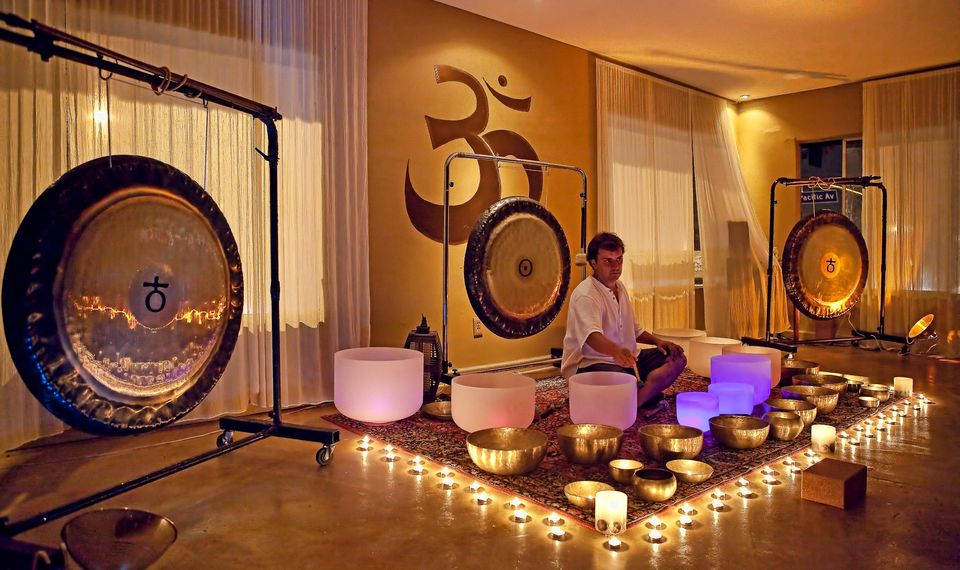
Sound healing is one of the effective modalities in holistic health care and natural healing therapy, which promotes deeper states of relaxation, emotional release, and equilibrium. However, as with any other alternative healing treatment, understanding the possible risks is important and this will also help to take the necessary measures in order to have a safe and realizable experience.
In this blog, we will answer the most frequently asked questions regarding the risks and safety of sound healing practices, and the measures that can be taken to use this technique and integrate it into a holistic way of life.
What are the potential side effects of sound healing?
Potential side effects of sound healing include headaches, dizziness, or emotional discomfort.
Although such reactions are often mild and temporary, they may be felt as the body acclimatizes itself to different frequencies and vibrations during a sound healing session. It is advisable and best to do this gradually, so work with a professional who has been trained in this.
The process of sound therapy inflow relates itself to the energy fields in the body, leading sometimes to sensations and emotions that are endowed with inertia. This includes symptoms such as slight headache, light-headedness, or even expression of feelings like crying.
Those who are undergoing this process often use these as pointers to the release of pent-up stress and emotional toll, which is rather common during healing. These effects, however, are rather short-term, however, working with holistic practitioners can assist in making the process more pleasant.
Is sound healing safe for everyone?
Sound healing is generally safe, but certain individuals should consult with a doctor before starting.
Practical guidance from such a practitioner assures that the specific needs of patients in case of such disorders are met in a safe manner.
On the one hand, sound healing is a very effective method in the maintenance of the well-being of the body and the inner self, while some frequencies or sounds may have adverse side effects on certain individuals with health issues in particular.
For instance, some people with epilepsy are very sensitive to sound, so underscoring some tones is forbidden for pregnant patients. It is crucial to always communicate how sound healing will be incorporated as part of the treatment regimen to your doctors.
Can sound healing cause emotional discomfort?
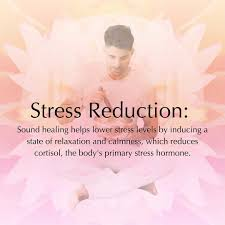
Yes, emotional discomfort is common during sound healing as it can release stored emotions.
Since sound makes it possible to evoke feelings that have been buried deep away, this is taken as healthy progress toward recuperation and stability. It is wise to prepare oneself mentally beforehand in order to be able to well manage and handle any of these in the future.
The use of sound in the practice of sound healing is aimed at addressing emotional disturbances, and therefore, problems in these areas may provoke certain feelings such as anger or sadness. This is normal and part of the relief of the emotions which is one of the healing practice advantages. For the beginning of energy therapies, it is advisable to work with someone experienced and suggested since one may experience specific emotional changes by herself.
What precautions should be taken during sound healing?
Precautions include starting with shorter sessions and communicating with a trained practitioner. It’s vital to set a clear intention for the session and monitor your body’s response throughout. This ensures the frequencies used are suitable for your specific needs, helping to prevent overstimulation or discomfort.
In particular, a first experience could absolutely focus on the length and the intensity of the sessions without attempting to define these from the start because of the ability of the body to learn and gradually adapt to new energy patterns.
Using practice in a healing supportive environment such as a natural healing center allows equal benefits to be obtained from sound healing with the mind and the body. It was also noted that it is aided by drinking water before and after the session around the session which may help the processes introduced by sound healing.
Can sound healing interfere with conventional medicine?
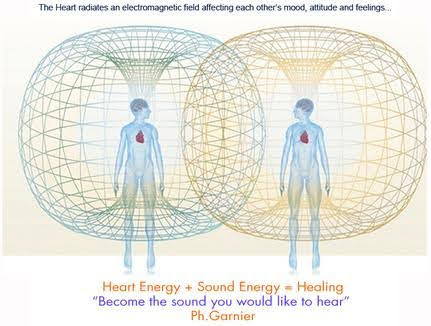
Sound healing complements conventional medicine and should not interfere with ongoing treatments. However, always inform your healthcare provider about your sound healing practices, especially if you’re undergoing treatment for chronic conditions or mental health. A combined approach can enhance your overall well-being.
Sound healing can be well integrated into the practice of other therapies as a self-healing modality and does not conflict with the action of orthodox medicine. Many patients with chronic conditions find that sound healing enhances their quality of life by reducing stress, improving mood, and promoting healing. Effective communication between your physician and the complementary and alternative health care providers promotes optimal healing.
How can sound healing be personalized to minimize risks?
Sound healing can be personalized by tailoring frequencies and session lengths to the individual’s needs.
This helps to reduce the amount of discomfort that occurs in the individuals in the session and targets specific symptoms that may be within the physical or emotional nature. Treating oneself without the assistance of a specialist is much more risky than working directly with a practitioner to achieve the desirable effect.
There ought to be no doubt that everyone’s health and wellness journey is distinct, and so their sound therapy experience is unique from one another. With the help of a skilled practitioner, the techniques are customized such that sound spot therapy can be achieved to some parts of the whole body or mind that require attention and treatment.
Individualized appointments also consider the current physical and psychological condition of an individual, which is critical in healing. Not only are the advantages of the sessions fully harvested in addition to this but the experience is made pleasant and stress-free.
What should I do if I experience discomfort during a session?
If discomfort arises, stop the session and inform your practitioner. They can adjust the sound frequencies or provide grounding techniques to help you feel more comfortable. Discomfort can signal that your body needs a gentler approach or a different healing frequency.
Everyone undergoes pain when they first start sound healing in the world no matter what. Modifications to the duration of the sound or its intensity may be made by practitioners in order to help your body gradually adapt to the situation. Suffering from killing sounds may affect one’s ability to focus on the sound treatment.
A basking effect, such as long or slight stretches, can help one cope during such times. It is advisable to talk to your practitioner in great detail because this will go a long way in ensuring that your sessions are beneficial for your health and well-being.
Conclusion: Sound Healing Safely
If mindfulness is exercised while practicing sound healing, it has a number of benefits for those in search of mind-body therapy and its holistic advantages. One important issue is the perception of this alternative medicine’s threats.
If people include this factor in their practice, they will make sure that this approach for being healthy is secure within one’s healthy practice. Whether you are a beginner or an intermediate practitioner of sound healing, you will benefit from working with practitioners of holistic health and customizing your sessions so that you will maximize the benefits that sound can offer.
As the above and other forms of sound and movement gain more acceptance within our population, the responsibility of using sound appropriately and ethically will lie with the sound user. Be guided by professionals and pay attention to your body to avoid incidentally denying yourself the benefits of this powerfully life-changing practice.
Sound Healing
Sound healing is an old practice that has begun to attract renewed interest in the last number of years.

Among the various modalities practiced in the sphere of alternative medicine, sound healing is probably the most effective one. Its attributes and mainly the ability to help a person relax and regain his or her balance have led to its widespread use in numerous natural treatments.
In this post, we discuss the most important questions about the effectiveness of sound healing: tips from professionals and its use in complementing medicine and other healing methods. These will compactly address the questions of those who have just started learning about and actually engaging in sound healing as well as those who wish to move forward in their practice.
How can sound healing improve holistic health care?
Sound healing improves holistic health care by balancing the body’s energy fields and reducing stress. This non-invasive therapy aligns with natural healing therapies to promote physical, emotional, and spiritual well-being.
With the incorporation of sound healing, there is a successful restoration of your mind body balance and improved health. The healing effects of it also comfort the patient and assist him or her in their individual healing.
In-depth sound therapy is likely to bring about monumental changes in the different areas of functioning, especially when included in the holistic healing systems. Decreased anxiety levels, better sleep, and greater relaxation are among the positive changes many people have reported after using sound therapy frequently. This is effective in most of the health and healing practices and hence should be embraced in every wellness and healing journey.
What are expert tips for maximizing the benefits of sound healing?
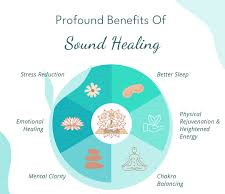
To maximize benefits, experts recommend consistency in sessions, combining sound healing with complementary medicine, and practicing mindfulness.
Together with other measures, it equips patients for sound therapy, promoting a better treatment response when vibrations are introduced to the body. This can be done by adopting a relaxation technique and concentrating on your breathing before and during the sessions to achieve maximum benefits when performing sound therapies.
Since they are specifically designed for particular patients, results can also be improved by employing appropriate frequencies. In patient-centered healthcare, using sound healing techniques, some practitioners recommend using guided imagery or meditation as supportive therapies for sound.
Can sound healing be used with other natural healing therapies?
Yes, sound healing works well with other natural healing therapies like herbal medicine for holistic care, yoga, and meditation.
The practice of combining these modalities has been reported to improve relaxation, reduce pain, and generally be restorative. Several practitioners believe that sound therapy should not be practiced in isolation and that its application improves other alternative healing practices, thereby completing the healing process.
As an illustration, the use of sound healing techniques within the framework of yoga practice may enhance the depth of meditation and increase people’s sensitivity to their own bodies more powerfully. On the same note, when herbal treatments are used in conjunction with sound therapy, the effectiveness of both is maximized, resulting in improved outcomes. This combination of treatments is gaining popularity in alternative medicine as well, where patients experience more and heal better through the synergy of therapies.
How often should you practice sound healing for the best results?

For best results, practitioners suggest weekly or bi-weekly sound healing sessions.
Making sound baths a part of regimens to include self-healing initiates even more probable long-range sound therapy positives that include an improved state of mind. Sound therapy is not a once off treatment but a continuing long-range form of intervention, and for best results one should practice it regularly.
Apart from the routine Healing sessions of sound therapy, self-healing through the use of sounds can be a booster of the therapy benefits. This kind of traditional therapy should be complemented with listening in, on sound baths or therapeutic music, practicing sound therapy, and most ideally, whilst busy with work or relaxing in order to try and keep that calm every day of the week. People who engage actively in sound mending will quite easily attune their mind and body systems as the body will respond greatly.
What equipment is most effective for sound healing?
The most effective equipment for sound healing, as per expert practitioners’ recommendations, are tuning forks, Tibetan singing bowls, and gongs.
These apparatus stimulate certain chakra points within the body to facilitate its energy flow and ease the body. Proper equipment selection can improve the environment and the effectiveness of sound therapy treatment especially when customizing to individual clients’ needs.
However, many are happy to use those whom they teach in their help by trying out different tools. Also, sound healing equipment within a comprehensive system of holism may improve general health and healing processes. Clinical and non-clinical approaches to health and wellness based on sound therapy include the use of different natural health approaches.
Can sound healing help with holistic pain management?
Yes, sound healing with holistic pain management is effective for reducing tension and promoting relaxation.
The vibrations produced during the course of sound therapy leave the nervous system so relaxed that chronic pain is erased in the body without the use of medication. People also use sound healers as one of the elements of natural health remedies – people do not want any medications.
It would appear that incorporating sound healing into an existing pain management system would enable not only the relief of pain but also an improvement in the general well-being of a person. This is particularly useful in addressing the physical and emotional aspects of pain and energy, offering a sound healing approach that aids in long-term relief and healing. This is, in part, what makes it even more important and useful to those who are looking for a way to manage pain in a more holistic manner.
How do natural healing centers incorporate sound healing?
Many natural healing centers integrate sound healing into their offerings by combining it with other integrative wellness treatments.
For these centers, sound therapy is not the only treatment that is emphasized but it is often complemented by other treatments such as the herbal treatment of the patients and the practice of yoga and meditation as forms of treatment for the patients who have various kinds of disorders. Sound therapy helps enhance these modalities, making it easier for a balanced healthy lifestyle.
The introduction of sound therapy in these facilities allows clients to have a chance to enjoy the benefits of more than one during their treatment sessions. As sound therapy becomes widely accepted, more therapy near me options have been made to the delight of the users seeking such services. Clients can therefore achieve a high level of healing and increase their health when they embrace sound therapy.
Conclusion: Unlocking the Power of Sound Healing
In the context of holistic health care, there exist many forms of sound healing therapy that are highly beneficial, especially when used alongside other healing traditions. Proper sounds have the power to completely transform the way individuals feel and live their lives. Other specific concerns can be met whether it is control over pain, emotional well-being, or simply a more fulfilled sense of being inside one’s own body. There are some feelings and possibilities that sound therapy brings, as well as less painful and faster recovery.
Sound Healing
Sound healing is an old practice that has begun to attract renewed interest in the last number of years.

In the holistic healthcare system, sound healing is one of the revolutionary techniques that can be used with Western medicine as well as alternative healing therapies. This post attempts to describe the ways in which sound healing can be combined with other healing methods in the context of mind-body practice, and total patient management. There is no need to hesitate in case you are searching for holistic therapy near me or are interested in these healing methods in another way, as sound healing is definitely worth trying for everyone.
How Does Sound Healing Enhance Holistic Health Care?
Sound healing enhances holistic health care by promoting mind-body balance and emotional well-being. This non-invasive therapy is used in natural healing therapies to reduce stress, improve relaxation, and help realign the body’s energy fields.
Many will find it useful when perfect interplay is put in place using other supportive integrative health practices to enhance the healing of the body. In an integrative healthcare approach, sound healing is often integrated into other practices like meditation, yoga, or aromatherapy to provide maximum therapeutic effect.
Sound waves are able to resonate within an individual on a tissue level which helps to heal patients both physically and emotionally. Through which the underlying discomfort is relieved, and not only some symptoms this practice has found space within new roles of people’s health and wellbeing research.
Can Sound Healing Be Combined with Conventional Medicine?
Yes, sound healing complements conventional medicine by addressing emotional and energetic aspects of health.
Traditional treatments primarily emphasize physical symptoms, while sound healing operates on a mind-body wellness interface, easing emotions and tension. It facilitates healing naturally without competing with existing medical treatments.
For patients receiving surgery, chemotherapy, or any other extensive treatment procedures, sound healing has been incorporated into integrative medicine to enhance recovery rate and emotional stability. By promoting relaxation and reducing stress, sound healing facilitates better results for the patients and their quality of life. This interrelation between traditional treatment and other medicinal modalities makes sure that the patient is well taken care of.
What Role Does Sound Healing Play in Integrative Wellness Treatments?

Sound healing plays a crucial role in integrative wellness treatments by aligning physical, emotional, and spiritual health. It is used alongside therapies like acupuncture, herbal medicine for holistic care, and massage to provide a complete healing experience. These integrative wellness treatments address all aspects of the human experience, ensuring deep and lasting recovery.
Practitioners of integrative health have blended sound healing such that a harmonious and all round healing is achieved. The noise created during the therapy works wondrously to remove any blockages that may have formed making the pain relief work much more efficiently. Sound treatment is beneficial and relevant in several treatments, such as chronic pain, restoration of emotional balance, and control of stress lowering the level of stress.
How Do Holistic Health Practitioners Use Sound Healing?
Holistic health practitioners use sound healing to balance the body’s energy systems and promote overall wellness.
More especially, when a delicate force of sound healing is needed, it most often is utilized together with Reiki, meditation, and energy healing therapy, among others. Energy healing sounds work by realigning the fields of energies in the body, which makes it necessary and effective among alternate methods of healing.
These experts use sound healing as a constituent part of advanced clinical programs for the treatment of patients’ bodies and emotions. The sound absorption induces a deep state of rest and allows the body to begin its own processes of healing. In the natural healing centers and holistic therapy sounds healing is one of the basic procedures that almost any skilled therapist has.
Is Sound Healing Effective for Holistic Pain Management?
Yes, sound healing is an effective method for holistic pain management, offering natural relief from both physical and emotional pain.
Muscle relaxation, lessened stress, and other structural elements inherent to sound therapy result in an endorphin release into the body. It is very useful for the treatment of chronic pain in patients without the use of medication.
Patients appreciate the fact that constructive sound is a part of their wellness treatment, and most look for constructive sound as a drug-free method of pain management. Pain is present in the physical as well as energetic bodies and both levels are healed by the use of sound while soothing the overactivated mind. It is one of the healing arts that other arts are intertwined with because the fundamental aspect of healing undesirable experiences is addressing the psychological problems and stress that almost always accompany pain.
Can Sound Healing Support Emotional Wellness in Complementary Medicine?
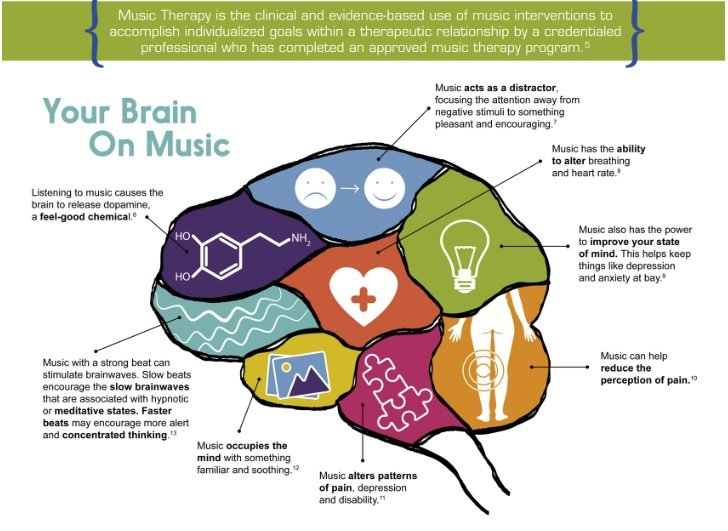
Sound healing supporting emotional wellness is highly effective by reducing stress, anxiety, and depression.
In Complementary medicine, sound therapy is applied in conjunction with patient therapies, relaxation therapies, and other affective supports. The stress-relieving waves allow the brain to rest since over-exertion is gradually minimized, thus inducing emotional regulation.
Sound healing is one of the numerous components of preventative health and other therapies that aids in coping with the emotional burden of everyday lived experiences. One of the many benefits of sound therapy, in this case, is that it promotes effective engagement where mental fatigue is less and there is clear emotional focus. It is therefore no surprise that this practice has become a helpful aspect of emotional wellness in the context of whole-person rehabilitation.
How Do Natural Healing Centers Incorporate Sound Healing?
Natural healing centers often incorporate sound healing as part of their holistic treatment programs. It’s used alongside therapies like yoga, meditation, and herbal medicine for holistic care to enhance overall healing.
The alignment of energy systems of the body is achieved through sound healing therapies hence forming an important aspect of these wellness centers. This treatment approach does not only include alternative therapy techniques but also combines all techniques with an integrative approach to improve the health of patients and their well-being in the long run.
The use of sound healing provides continuous improvement in the recovery process as stressors, apprehensions, and depression issues are resolved through receiving comprehensive treatment. It is quite common for the centers of holistic medicine to also include sound healing as one of the elements of treatment.
Conclusion: The Power of Sound Healing in Integrative Health Practices
Concerning the augmentation of traditional or complementary therapeutic methods, the importance of sound healing is surely paramount. If you need relief from stress, or pain, or wish to increase positive feelings, then sound wellness therapy is the option for you. Due to increasing awareness of complete human health, the healing power of sound is believed to be incorporated more in therapeutic practices as an adjunct and will offer a way forward in overall health management. If you feel like this, seeking a center practicing such therapy, you will understand how sound healing affects health.
